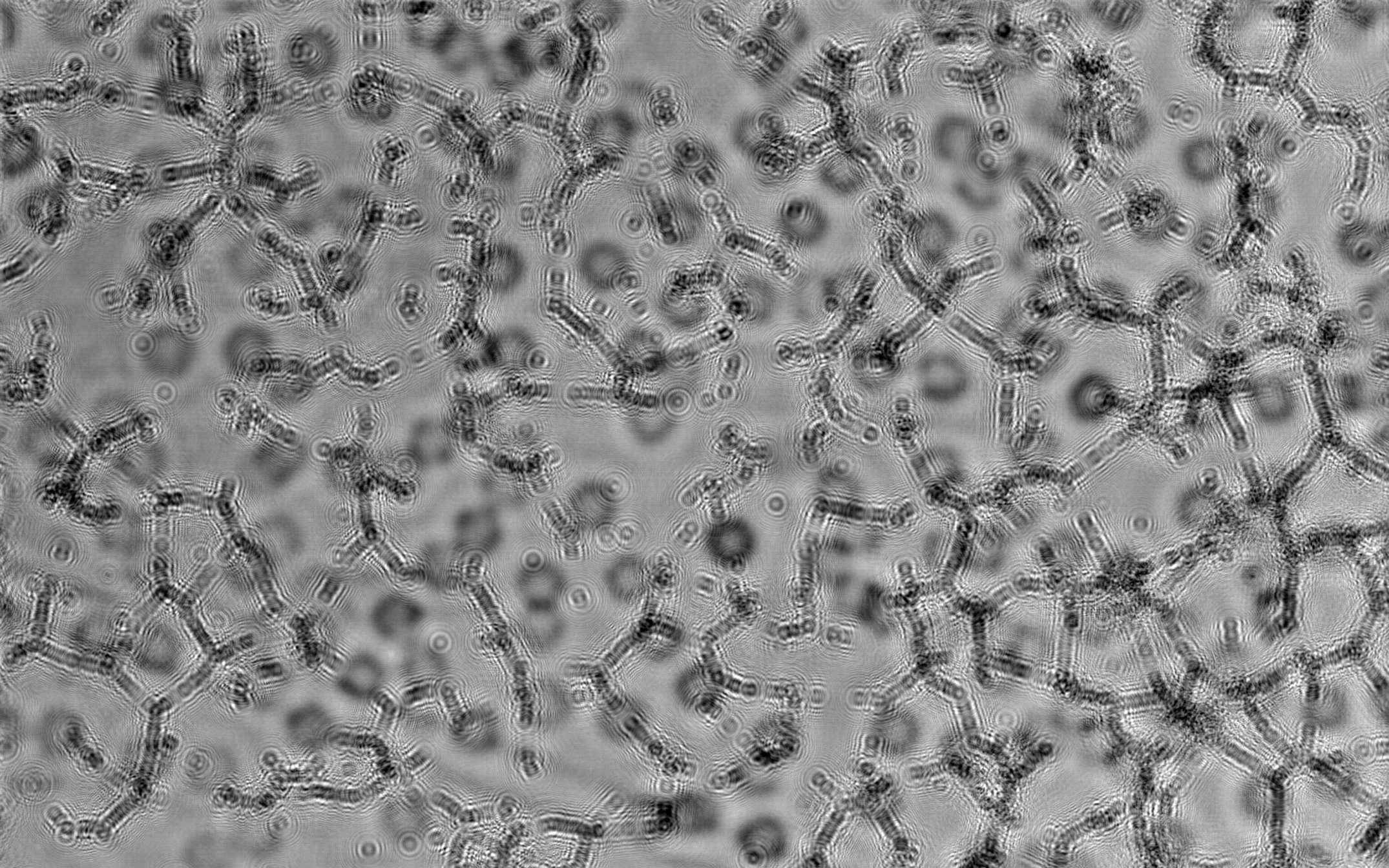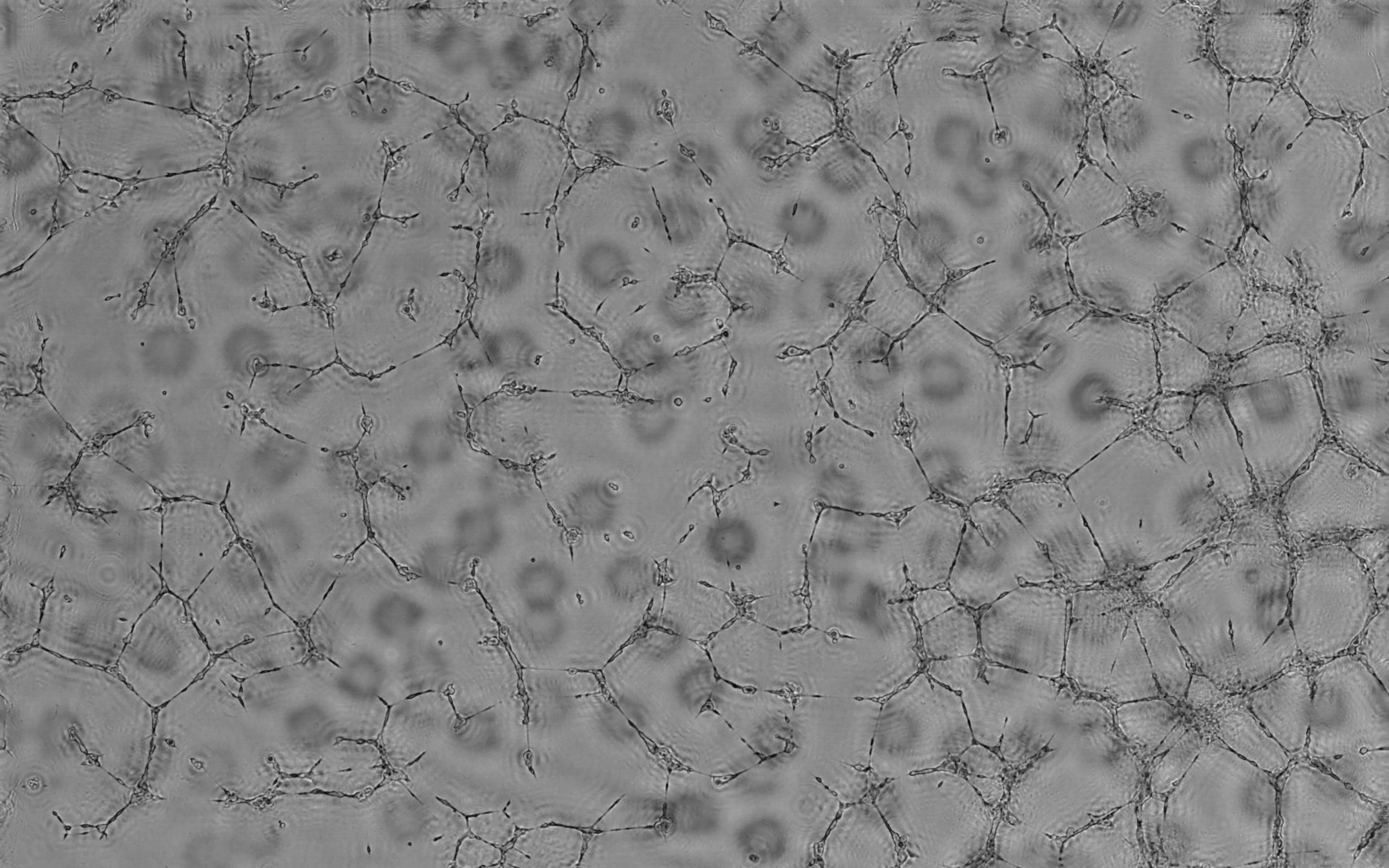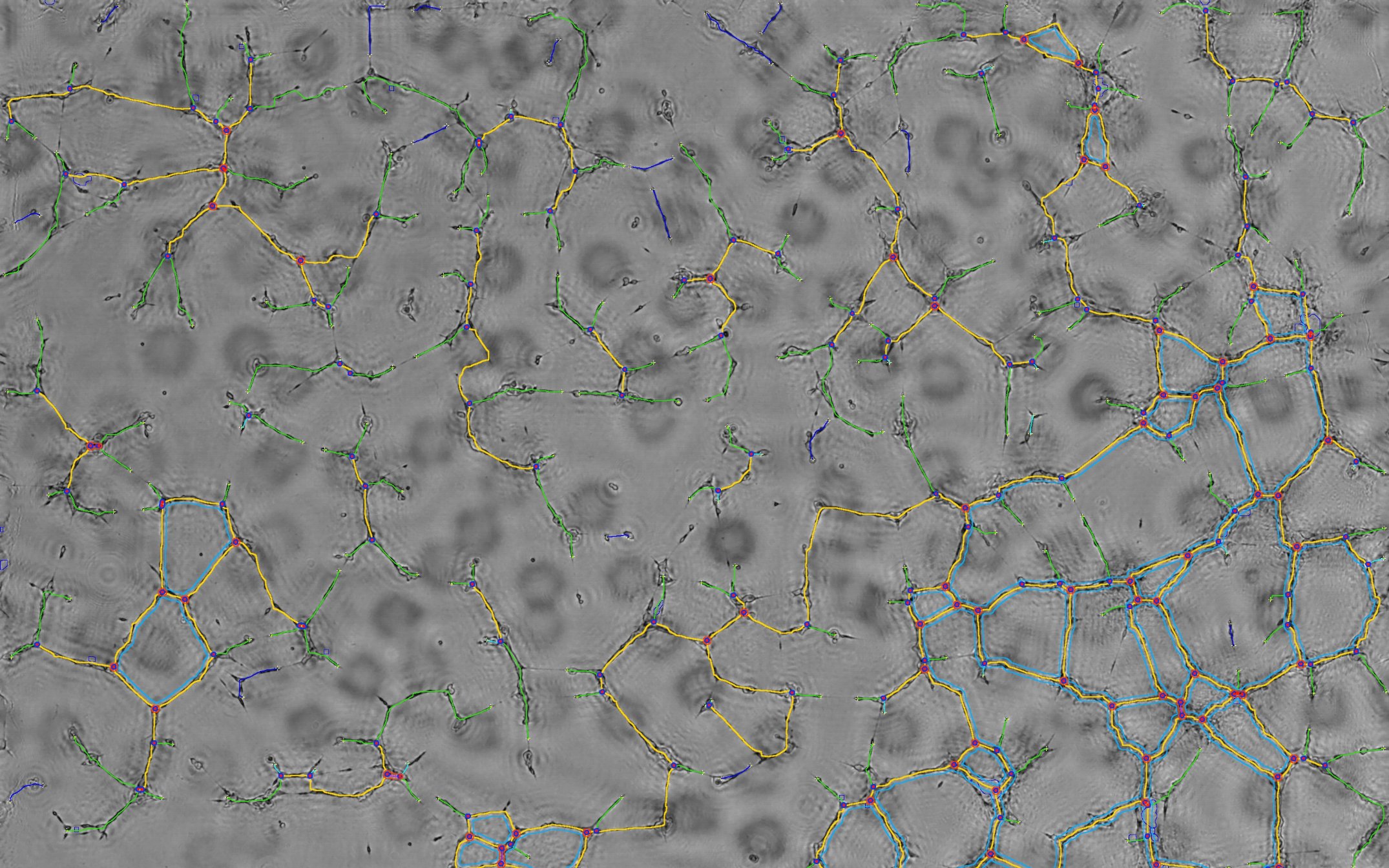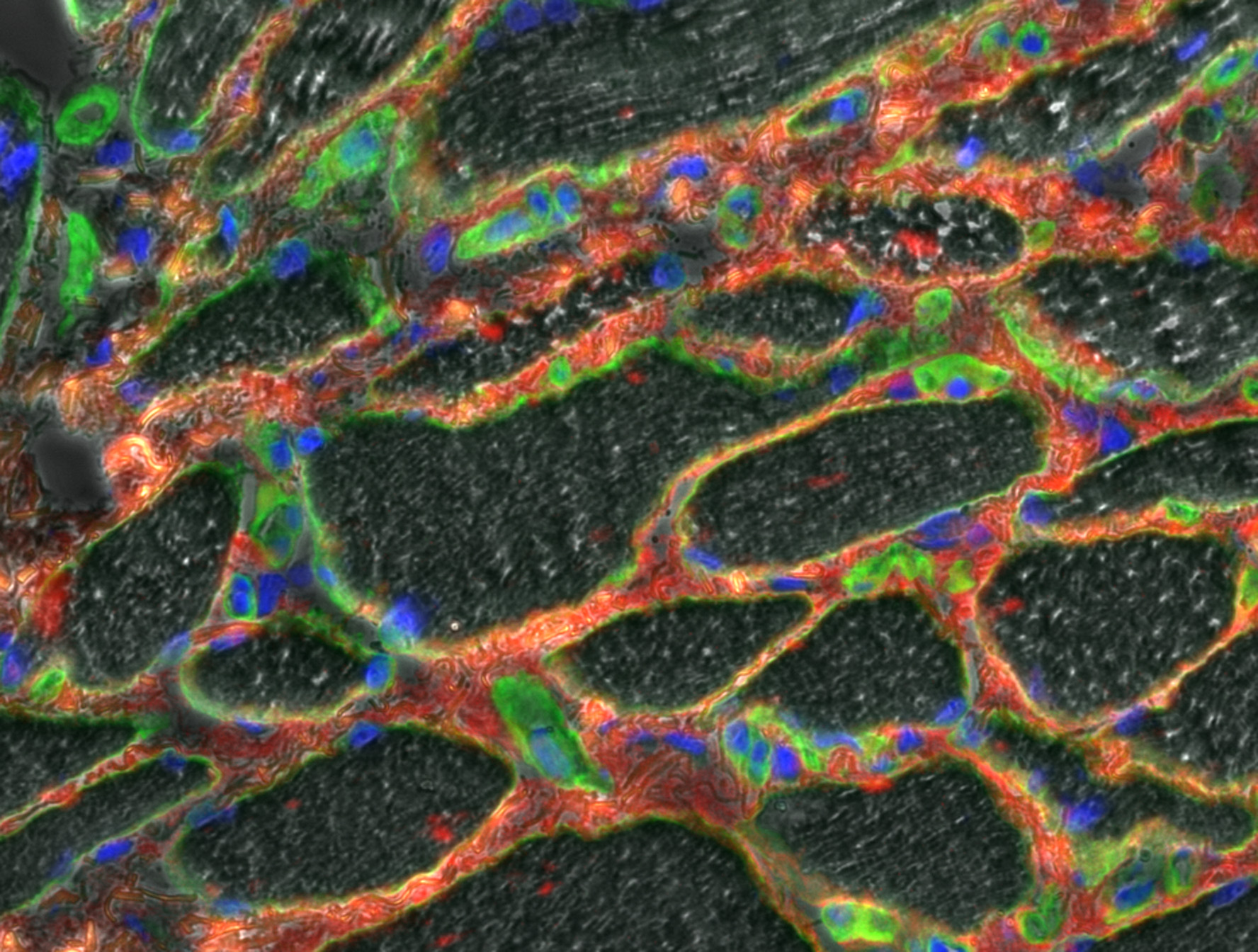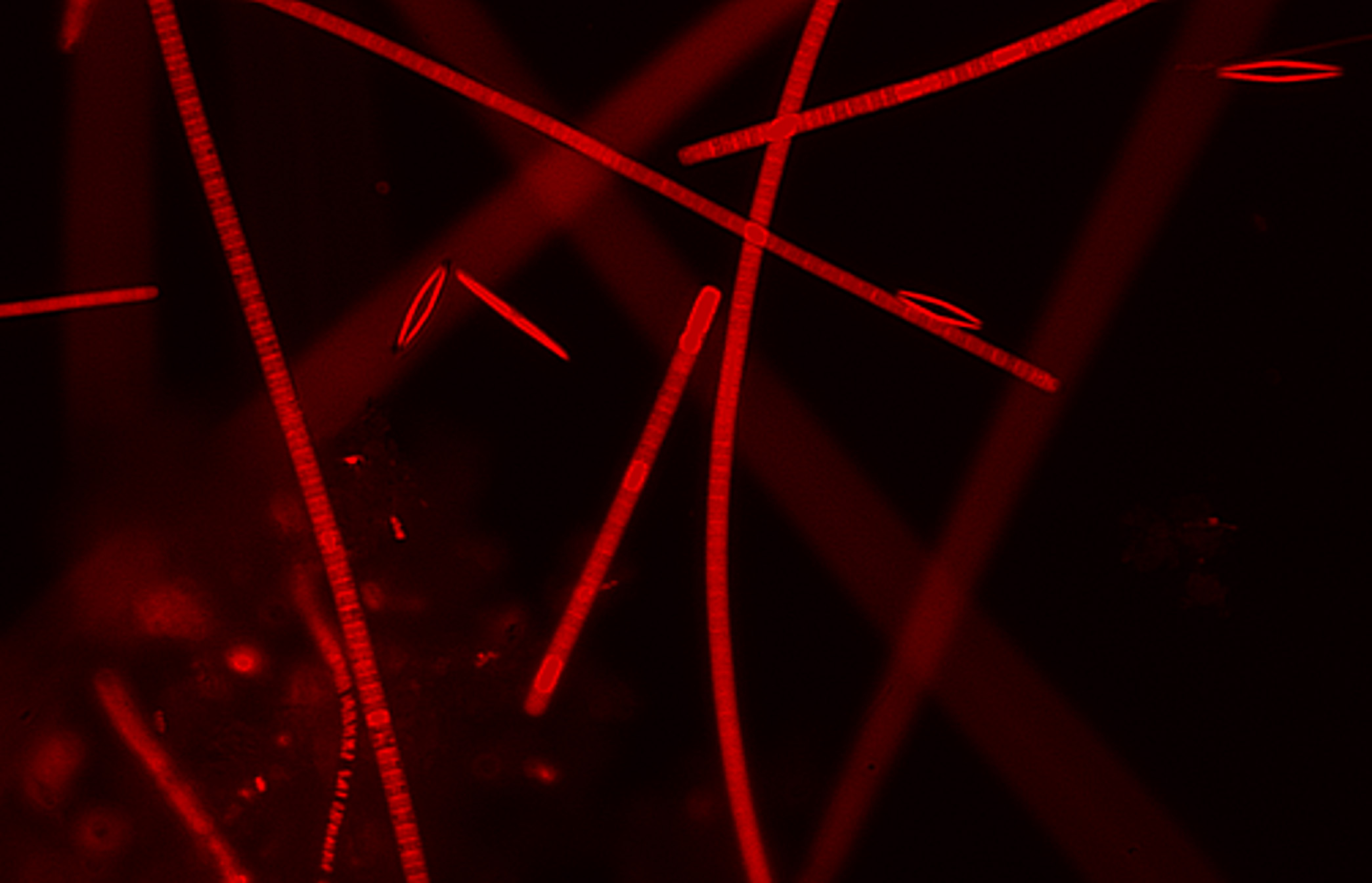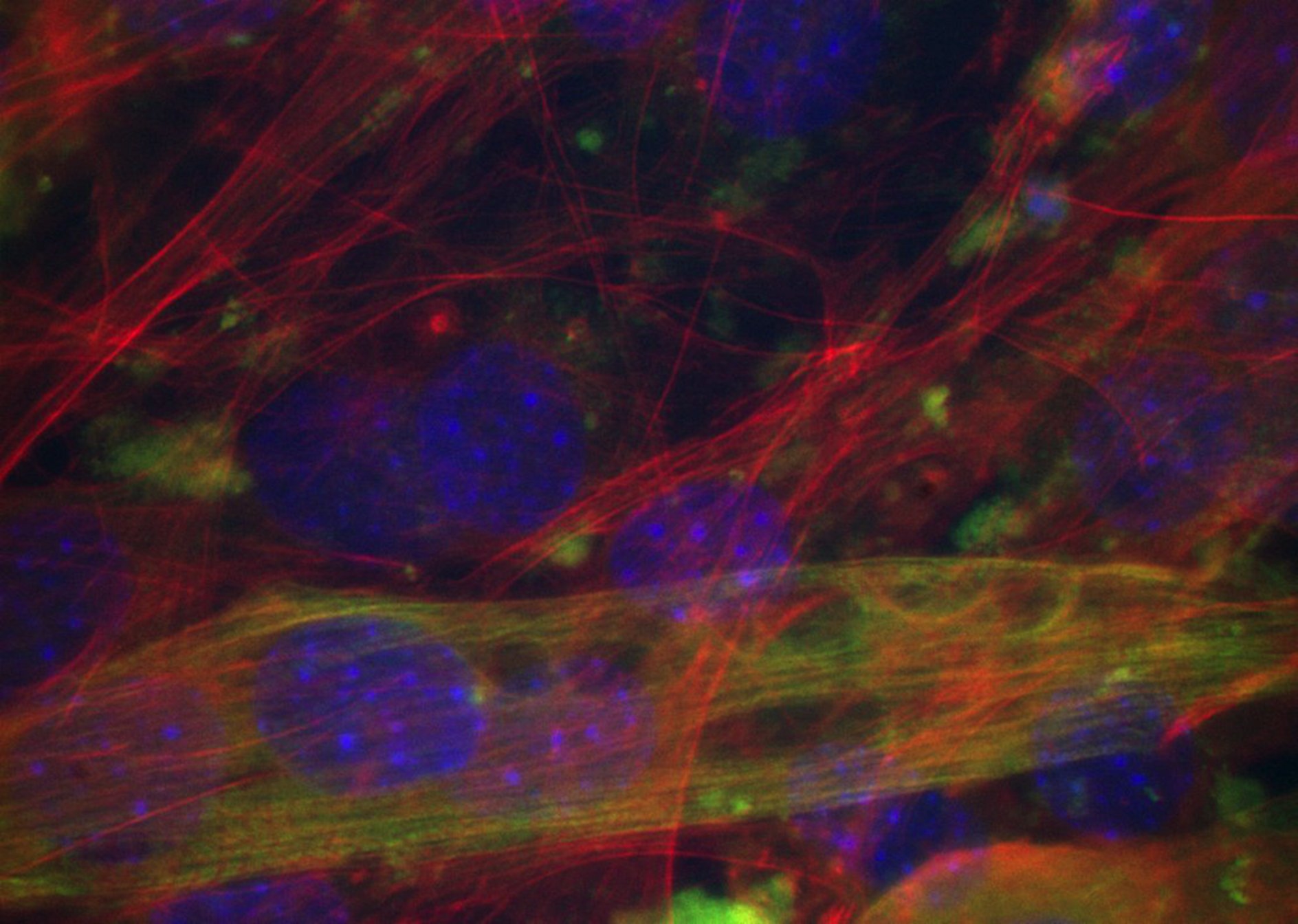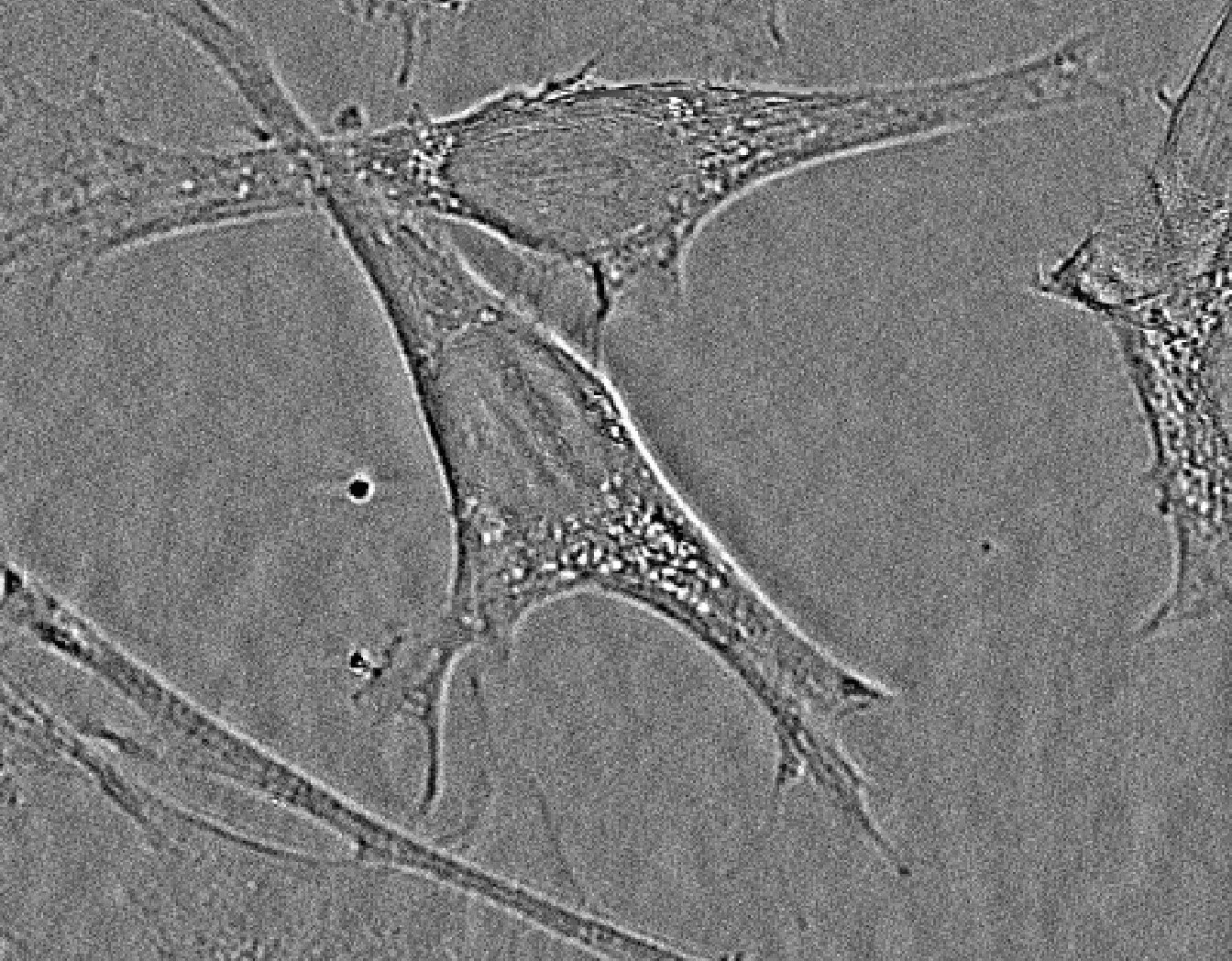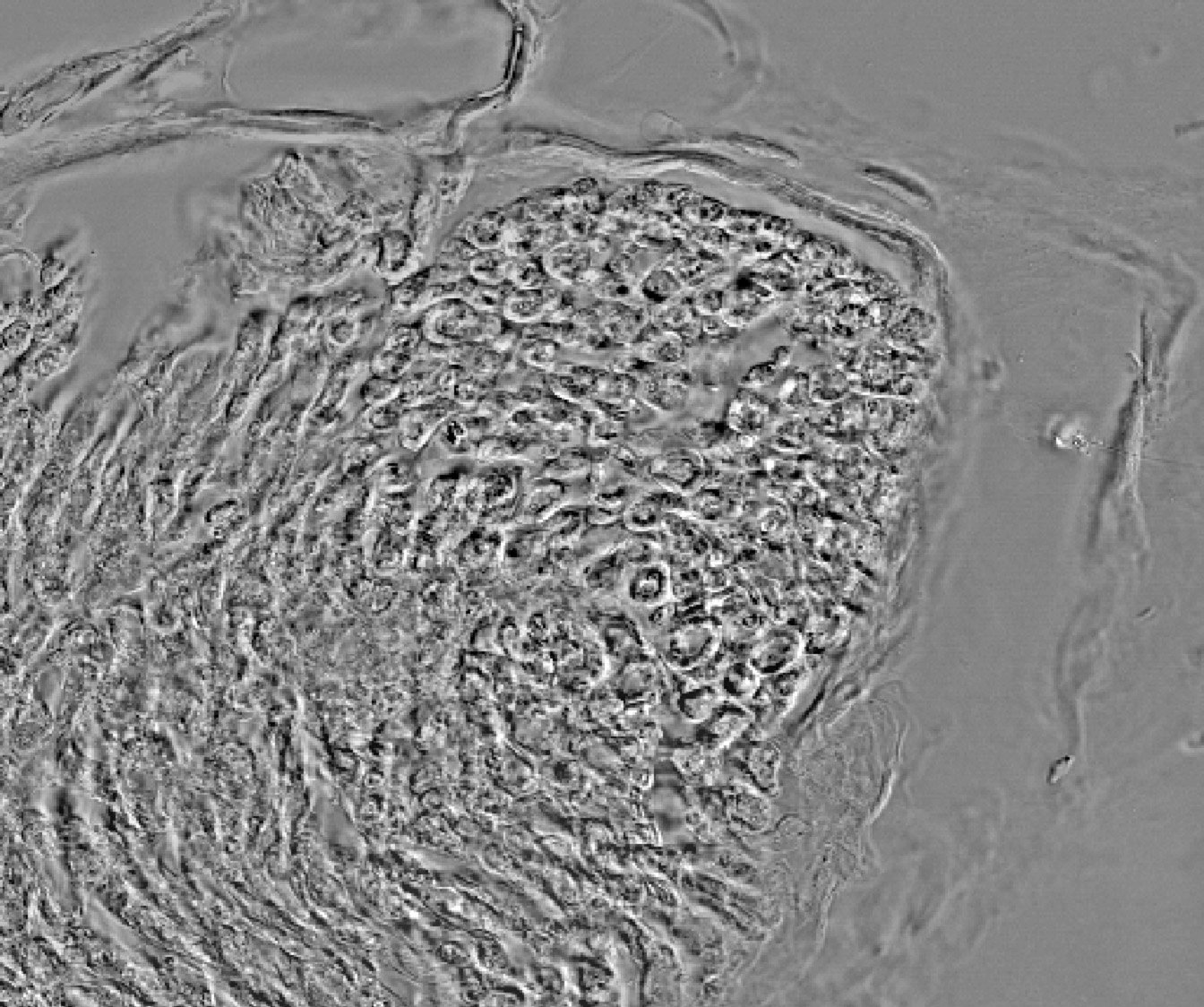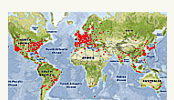Comparison of tissue-specific microvascular endothelial cells to HUVECs for skeletal muscle tissue-engineering
D. Gholobova, L. Desender, G. Carpentier, M. Gérard, L. Thorrez.

- Modeled map of in-vitro endothelialization network after analysis by the customized Angiogenesis Analyzer
The size of in vitro engineered skeletal muscle tissue is currently still limited due to the lack of a vascular network in vitro. Different approaches for inducing vascularization in vitro have been described, but all have shortcomings. In nearly all studies, human umbilical vein endothelial cells (HUVECs) are used to develop vascular networks. HUVECs are well characterized, easy to isolate and are known for their capacity of vascular network formation in vitro. But in vivo, new blood vessel formation, angiogenesis, is mainly established by microvascular endothelial cells (MVEC) located in the smallest blood vessels, the capillaries. MVECs differ in morphologies and properties depending on the tissue. Since our interest is developing human bio-artificial skeletal muscles (BAMs), we evaluated skeletal muscle derived MVEC cells (SkMVECs) for their vasculogenic potential in our model.


